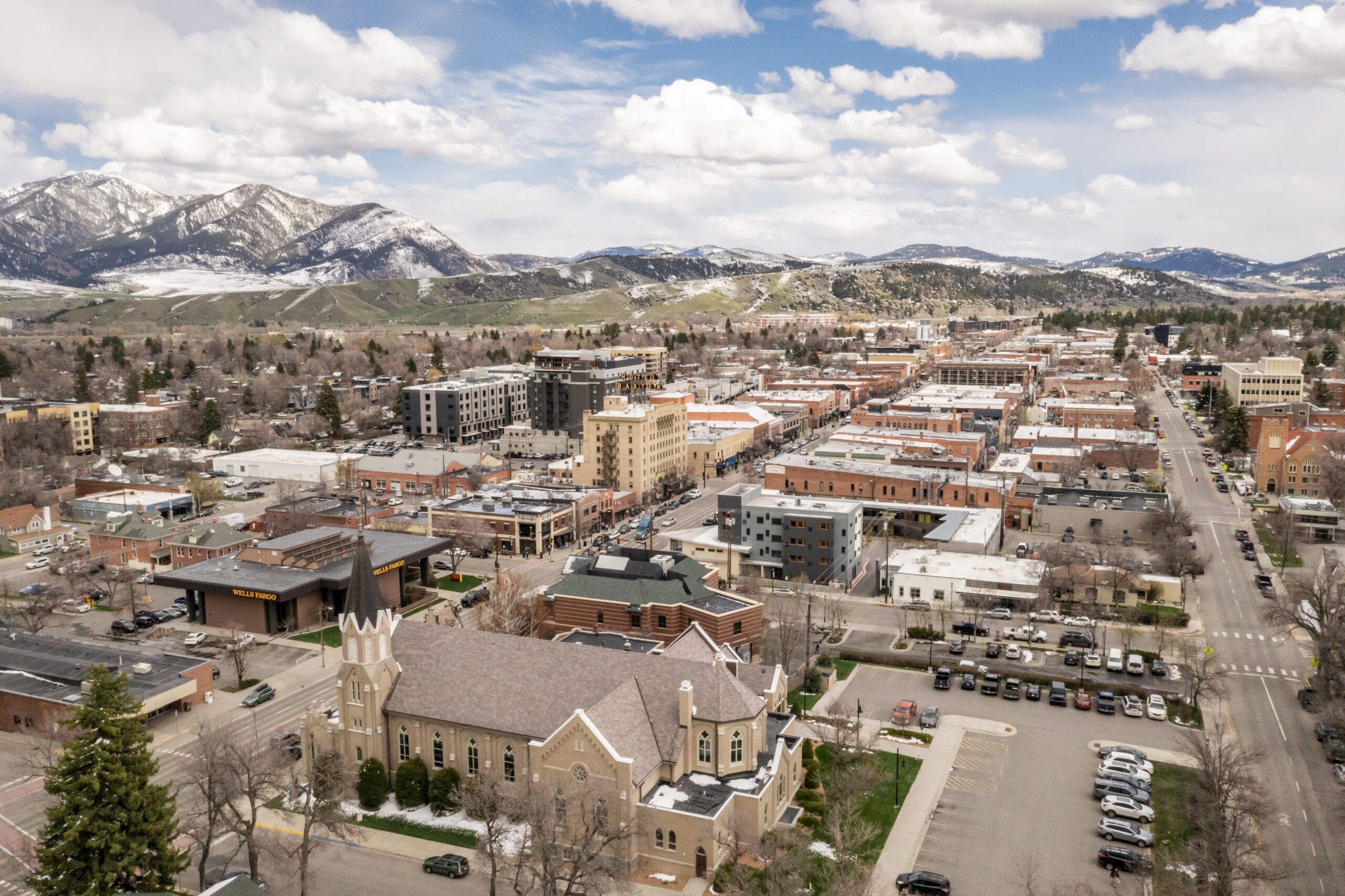Montana coal provides jobs and revenue. Is it worth the environmental cost?
By Joseph T. O’Connor
Photos by Joseph T. O’Connor and Joe Paulet
Video by Joe Paulet
EBS Coal from Outlaw Partners on Vimeo.
Southeast Montana’s rolling hills reveal shades of brown and gray in early spring before the arrowleaf balsamroot blooms, giving the arid landscape a yellowish hue. Here, Highway 314 meanders north from Sheridan, Wyoming and past the Tongue River Reservoir, its leafless trees leaning askew from microburst downdrafts.
The turnoff to Spring Creek, the largest coal mine in Montana, is 35 miles from Sheridan past Decker, population 76. A sign at the guardhouse reminds employees and visitors of the hazards at an operation this big: “Most things are safe until you forget they are dangerous.”
Spring Creek is one of 16 mines in the Powder River Basin, which spans 14 million acres between Casper, Wyoming, and Billings, Montana. The area produced 41 percent of the nation’s coal in 2013, or 407.5 million tons, and sits on approximately 25 billion tons of recoverable reserves.
“There’s enough coal in Montana alone to supply the entire U.S. for the next 100 years,” said Chuck Denowh, spokesperson for the Montana branch of the Count on Coal advocacy campaign.
At Spring Creek, as in much of this region, coal is king. But not everyone is buying it.
_____________
Coal is cheap to produce, and the worldwide market is starving for it. It currently provides 40 percent of America’s electricity, and while cheaper natural gas prices are challenging its reign, the U.S. Energy Information Administration estimates coal will still account for 32 percent in 2040.
The most abundant fossil fuel in the world, coal is the product of 300-400 million years of plant degeneration, heat and geologic pressure.
In 2013, Montana mines extracted 42.2 million tons of coal, bringing $516 million to mining companies, and generating roughly $100 million in tax revenue for the state, said Bud Clinch, executive director for the Montana Coal Council. The Treasure State’s six coal mines employed 1,224 workers last year, and as of July 2013, coal provided 53 percent of its electricity, according to an EIA report.
“I want to be able to turn the lights on in my home,” said former Lt. Governor John Bohlinger, who at press time this May was battling in Montana’s Democratic primaries for Max Baucus’s vacant Senate seat. “We need incentives for renewable energy, but we can’t just quit burning coal.”
If the Obama Administration has its way, that may be exactly what happens.
Carbon dioxide, a by-product of coal combustion, is the single largest pollutant in the world, emitting 36 billion metric tons annually. In 2013 – and following years of decline – domestic CO2 emissions increased 2 percent to 5.38 billion metric tons, due in part to rising natural gas prices over the harsh winter making coal more competitive.
As a result of the President’s 2013 Climate Action Plan, the Environmental Protection Agency last fall proposed limiting CO2 emissions on new coal-fired plants, and it plans to issue a final rule by January 2015.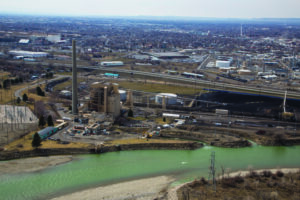 At Mountain Outlaw press time in mid-May, the EPA also expected to release guidelines for existing plants by June 1, giving states until June 2016 to design programs that curb emissions.
At Mountain Outlaw press time in mid-May, the EPA also expected to release guidelines for existing plants by June 1, giving states until June 2016 to design programs that curb emissions.
“President Obama’s war on coal is a war on Montana union jobs,” said Congressman Steve Daines (R-Montana) in a May interview. Montana’s only House representative and a GOP Senate candidate running in the mid-term elections, Daines looks to capitalize on the Climate Action Plan. “It’s a war on our [Indian] reservations that are sitting on coal, and at the end of the day, it’s a war on Montana families,” he said.
Daines, who grew up skiing and hiking in Bozeman, Montana, says he supports protecting the environment. But he also wants to balance that with jobs provided by the coal industry, he said.
A bill passed by the House in March and pending hearing in the Senate would override the EPA rule on new plants. Co-sponsored by Daines, the Electricity Security and Affordability Act is not likely to pass the Democrat-controlled Senate, according to David Parker, a political science professor at Montana State University. The White House has said Obama will veto the bill, should it gain Senate approval.
These new EPA regulations would likely result in the shuttering of numerous existing power plants. Indeed, previous regulations for other pollutants prompted 145 power-generating facilities to close between 2010-2012, and in April 2015 the agency will implement Mercury and Air Toxics Standards, something EIA energy analyst Elias Johnson says will close another 180 plants by 2016.
“A lot of these units probably have some pollution controls in place, but with the implementation of MATS and those [associated] costs, it isn’t economical to keep them running,” said Johnson, explaining the reason plants gave for their expected shutdowns.
In Billings, Montana, the J.E. Corette power plant, which opened in 1968, is awaiting a 2015 mothballing. This is mainly due to its age – coal-fired plants have a shelf life of 30-40 years – but also because MATS compliance upgrades would cost Corette’s owners PPL Montana nearly $10 million.
Implementation of the new carbon regulations is still a 1-2 years out, but the effects will be global. By reducing CO2 production from domestic coal-fired plants, Obama is setting an example for other countries; conversely, a pending increase in coal exports means he would be supplying it to other nations with less stringent emissions standards.
____________
Coal mining is about efficiency, and every second that coal doesn’t leave the mine is a second its owners want back.
The 9,000-acre Spring Creek surface mine is crawling with massive heavy equipment. A 240-ton dump truck rounds a corner, laden with coal. Each of its six tires is 11 feet tall and costs $40,000. The mine runs 24/7, 365 days a year, and most of its 278 employees commute from the Sheridan area.
The mine runs 24/7, 365 days a year, and most of its 278 employees commute from the Sheridan area.
Production at Spring Creek began in 1980, and Gillette, Wyoming-based Cloud Peak Energy bought it in 2009. Today, the mine produces a daily average of 50,000 tons of subbituminous, low-sulfur coal, which is used primarily for steam-electric power generation.
“The biggest thing that sets Spring Creek apart is our 80-foot coal seam,” said the mine’s general manager Dave Schwend, describing the mining process from his office on site. Schwend, 37, has a short shock of brown hair and a matching goatee. He wears scuffed Red Wings boots and jeans and he, like many in the area, pronounce it “Spring Crick.”
The first step in extracting coal from Spring Creek is stripping the topsoil, Schwend explained. After cast blasting the next layer of earth and other minerals, miners remove the overburden with 7,500-ton excavators called draglines. Buckets on these enormous machines hold 80 cubic yards of material, or more than 100 tons. This exposes the Anderson-Dietz coal seam.
“It’s a huge seam that makes mining very efficient,” Schwend said. “We don’t have the equipment to mine 80 foot at one time, so we have to take it in a couple of passes, but that’s a problem we’re happy to have.”
A shovel fills haul trucks with 250-ton loads of coal, which are dumped onto a mile-long conveyer belt and then crushed into pieces two inches in diameter. It’s then loaded into train cars through a dust-suppressing chute, and topped with a surfactant that keeps more than 80 percent of the coal dust from escaping, according to Schwend.
Excavation complete, the overburden is used as backfill and the mine begins reclamation – a government-regulated process of erosion mitigation and planting indigenous flora to return the site as close as possible to its original state. In 2012, Cloud Peak received an award from the U.S. Department of the Interior’s Office of Surface Mining Reclamation and Enforcement, recognizing its efforts to educate the surrounding community about reclaiming land and flood response.
Spring Creek Mine extracted 18 million tons of coal in 2013. Nearly five million of that was shipped to Asia, and the rest went to electric utility companies in the United States and Canada.
“We could ship more,” said Todd O’Hair, senior government affairs manager for Cloud Peak. “Asian demand is going through the roof, [and] the supply is here in Montana.”
is going through the roof, [and] the supply is here in Montana.”
Currently, Cloud Peak and other Montana coal companies sending coal to Asia use British Columbia’s Westshore Terminals, the largest export station in Canada. Last year, more than 30 million tons of coal moved through Westshore, mainly to China, South Korea and Japan.
But Westshore is reaching its export limits, O’Hair said, and domestic coal companies are looking to three new terminals proposed for the West Coast: the Gateway Pacific and Millennium Bulk terminals in Washington, and the Morrow Pacific Project in Oregon. All are currently in the permitting and environmental review process, drawing more than 325,000 public comments for Washington’s terminals alone.
At capacity, these new terminals could export up to 110 million tons of coal annually.
Cloud Peak is banking on approval for the $22 billion Gateway Pacific export terminal in Cherry Point, Washington. According to a 2013 press release, it signed an option agreement with Gateway Pacific developers SSA Marine to ship 16 million tons of coal each year from the port starting in 2018, the site’s expected completion date.
The proposed facilities are under scrutiny from environmental groups as well as citizens in Washington, Oregon and Montana, and transporting coal to the terminals is one major concern.
_______________
Burlington Northern Santa Fe Railway, now BNSF, is the major railroad shipping coal from the Powder River Basin through Montana, Idaho and Washington to the Westshore terminal in Canada. The second largest railroad company in North America behind Union Pacific, BNSF has been controlled by Berkshire Hathaway CEO and president Warren Buffet since 2009. It ships goods and commodities nationwide and into Canada, with coal providing 22 percent of its business.
In 2013, conservation groups including the Sierra Club and the National Resource Defense Council filed lawsuits in Washington State’s U.S. District Courts against BNSF. The two suits allege the railroad is violating the federal Clean Water Act based on the amount of coal lost from uncovered rail cars.
Currently, two to four BNSF coal trains travel daily from Montana en route to Canada. If the proposed terminals run at capacity, 40 more will run the tracks each day within a decade, according to a February 2014 report called “Heavy Traffic Still Ahead,” prepared for the Western Organization of Resource Councils in Billings.
Terry Whiteside, a transportation consultant representing agriculture, lumber and coal, helped prepare the report. He based that projection on the maximum number of coal exports from the terminals.
“I’m not a part of the environmental movement,” Whiteside said. “But no matter how you shake it down, there’s more [rail] congestion ahead.”
Matthew Jones, Regional Director of Public Affairs at BNSF, says those numbers depend on if the terminals actually operate at capacity, and on the demand for coal. He notes that while 40 percent of domestic freight is moved by rail, trains account for only 2.3 percent of the transportation industry’s greenhouse gas emissions.
“BNSF moves one ton of freight 500 miles on one gallon of diesel fuel,” Jones said. “That’s the equivalent of taking 6 million passenger cars off the road.”
____________
One hundred seventy-two miles north of Decker, the Bull Mountains rise to nearly 5,000 feet, their high desert plateaus folding up from the surrounding plains. Steve Charter has a cattle ranch here, an hour-and-a-half northeast of Billings.
Charter, 62, is the chairman for the Northern Plains Resource Council, a conservation nonprofit and part of the seven-state Western Organization of Resource Councils. His parents helped found 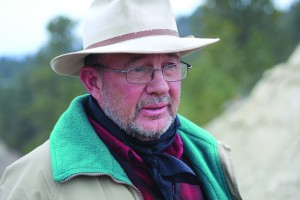 NPRC in 1972, 17 years after buying the ranch. Ever since, the family has battled companies mining coal from beneath their ranch and others in the Bull Mountains. The first was Consolidation Coal.
NPRC in 1972, 17 years after buying the ranch. Ever since, the family has battled companies mining coal from beneath their ranch and others in the Bull Mountains. The first was Consolidation Coal.
“[Consolidation] said, ‘Be reasonable, but just name your price and we’ll pay you whatever you want for your place,” Charter recalled during a tour of his property in March. His black scarf fluttered in the mid-March breeze as he pointed east over his 8,000-acre ranch. “Some things don’t have monetary value,” he said. “It’s kind of like making a deal with the devil.”
Down the rutted dirt road from the ranch, the Signal Peak Coal Mine is the only underground coal operation in Montana. It yielded 8.7 million tons in 2013, available through mineral rights leased from a private company. Since purchasing the mine in 2008, Signal Peak Energy has also attempted to buy land from the Charters and their neighbors in the Bull Mountains.
Charter and his son Ressa run 250 – 300 cows, and although the price of cattle is currently strong, the income is barely sustainable for two livelihoods. He says the longwall mining technique Signal Peak uses is damaging the land the family ranches on, pointing to gaping cracks in the soil on his property.
Longwall mining involves a massive machine called a shearer that cuts the coal-bed face. The product is then removed with a conveyer system, while hydraulic chocks support the earth above like pillars. Once it’s removed, the earth collapses into the space the coal occupied.
Natural springs form aquifers in the Bull Mountains near the ground surface, and Charter worries that when the ground collapses beneath these water sources, they will be cracked and destroyed. He’s toured the mining area with Signal Peak operators and Montana’s Department of Environmental Quality and taken 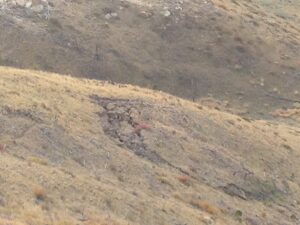 photos of 15-foot-wide, 40-foot-deep surface cracks.
photos of 15-foot-wide, 40-foot-deep surface cracks.
“I wouldn’t want a coal mine in my backyard,” said Jeffrey Fleischman, with the Office of Surface Mining Reclamation and Enforcement, a division of the U.S. Department of the Interior. “But our job is to make sure the environment is protected and the land is reclaimed to the same or higher standard that it was before it was mined.”
For 10 years after a mine completes reclamation efforts, state and federal government agencies make monthly inspections of surface revegetation and groundwater. Fleishman says the federal reclamation requirements are strict, and that Montana’s DEQ regs are even more stringent. Both include a bonding step to ensure mines will pay up, and the state requires an additional step to restore hydrological balance to ensure long-term productivity of the mined land.
“If we saw reclamation failing, the company would be required to fix it,” Fleishman said.
Growth is already in the works at the Signal Peak mine. On March 18, the Montana Land Board approved a 7,160-acre expansion there, effectively doubling its size and adding an estimated $127.2 million in state tax revenue. Signal Peak would lease the associated mineral rights from the Bureau of Land Management.
NPRC has filed a lawsuit against the BLM challenging the agency’s approach to enable the lease, Charter said. “At this point, the idea is not to shut the mine down or to stop the expansion. It’s to ensure the land and water are protected.”
For Charter, it boils down to ranching his land on his own terms, and working to prevent Signal Peak from developing strip mines in the Bull Mountains – something he believes is likely with  the recent expansion and if the proposed export terminals in the Northwest gain approval.
the recent expansion and if the proposed export terminals in the Northwest gain approval.
Sitting in his house, a passive-solar earth shelter, Charter suggests renewable resources such as wind, hydroelectric and solar as alternatives to coal, and says these energy sources could account for as many jobs in Montana as the coal industry does now.
“Any way we produce energy creates jobs,” he said. “Coal is a bad way to go in so many ways. It’s like if we said in 1980 that we really wanted to invest all our time into building typewriters in Montana.”
_____________
Reports released this spring by national and worldwide networks of scientists warned that without immediate worldwide attention, human-caused climate change would diminish food-production levels and increase extreme weather patterns, among other concerns.
In April, the Intergovernmental Panel on Climate Change released a study reporting that global greenhouse gas emissions had grown faster from 2000-2010 than in the three decades prior. With 235 authors from 58 countries, this was the fifth climate change Assessment Report completed since the IPCC formed in 1988.
On its heels, an 800-page National Climate Assessment released in May indicated specific climate impacts on each region of the country. “The global warming of the past 50 years is primarily due to human activities, predominantly the burning of fossil fuels,” stated the assessment, produced by more than 300 scientists.
University of Montana Regents professor of ecology Steve Running was the main author in the chapter on the nation’s forests.
“Mining coal is an 18th century activity,” Running said. “The disturbance rate in forests around the country is accelerating. We’re seeing increasing forest fires and pine beetle mortality. That’s the single biggest impact on forests in [the] Northern Rockies.”
China, the world’s largest coal importer, currently burns nearly as much as all other countries combined. It plans to stop importing coal in the next five years, Running said, a move that would have significant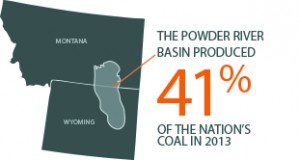 impacts on the Powder River Basin.
impacts on the Powder River Basin.
This leaves Montana Governor Steve Bullock standing on pivotal ground. He acknowledges the revenue and jobs that coal brings to Montana, and also the detrimental environmental effects from coal combustion. Like Bohlinger however, he says change is a slow-burning ember.
“We need to invest in making our energy production less carbon intensive,” Bullock said. “But you’re not going to flip a switch off tomorrow and stop coal burning, nor are you going to flip a switch tomorrow and expect all your power generation to be wind or hydro.”
Eyes will be on Paris, France in December 2015, when the United Nations Climate Change Conference holds its 21st meeting. Here, 196 countries plan to negotiate a new treaty curbing greenhouse gas emissions up to 70 percent from four years ago by 2050, and ultimately reducing global temperature increases to 3.6 degrees Fahrenheit by 2100.
As the coal conversation heats up, the world is looking for solutions to global warming. The sides are torn by the clash over king coal, and the winner is still up in the air.
This story was first published in the summer 2014 issue of Mountain Outlaw magazine.









